7 Advanced Persuasive Copywriting Techniques to Boost Conversion
Want to make your copy unignorable? There are persuasive copywriting techniques you can use.
Whether you want your reader to buy a product, subscribe to a service, or sign up for a newsletter. These copywriting techniques will help you persuade readers to do your bidding.
What Are Persuasive Copywriting Techniques?
Persuasive copywriting techniques are methods copywriters use to craft marketing messages that convince readers to take a desired action.
These techniques leverage human psychology to build trust and establish value. They also include using the right language and copy format.

Note: This is the second part of our guide to conversion copywriting strategies. We’ve explained the fundamental strategies that pave the way for effective persuasion.
Here, we raise the stakes by introducing you to 7 advanced persuasive copywriting techniques to boost your conversion rates.
Table of Contents
- What Are Persuasive Copywriting Techniques?
- Copywriting Technique #1: Use Psychological Triggers
- Copywriting Technique #2: Use Your Audience Language
- Copywriting Technique #3: Make Your Copy Scannable
- Copywriting Technique #4: Use Short Sentences and Paragraphs
- Copywriting Technique #5: MakeYour Value Proposition Obviuos
- Copywriting Technique #6: Make Your Copy Conversational
- Copywriting Technique #7: Get CTAs (Call-to-Actions) Right
- You Are Copywriting Ready. Break A Leg!
Copywriting Technique #1: Use Psychological Triggers
As humans, our decisions are swayed by some subtle yet incredibly powerful psychological rationales.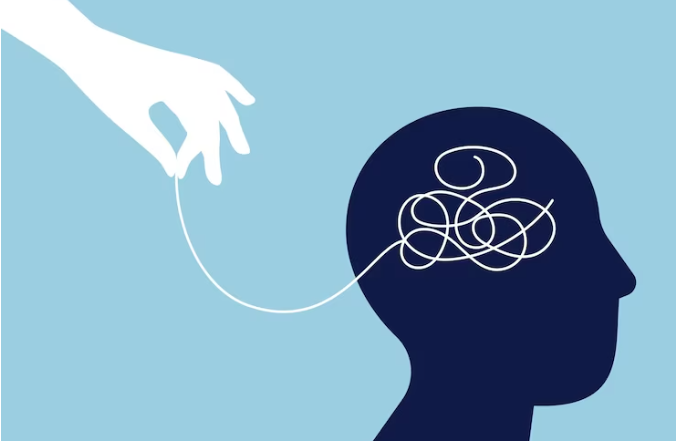
They’re the secret behind irresistible sales copy that seems to whisper, “You need this, and you need it now.”
If you understand these rationales, you’ll stop people in their tracks and influence their decisions. Below are 2 of them.
Psychological Triggers with Examples.
1. Scarcity
Marketers and advertisers have been using scarcity for decades.
Scarcity triggers the fear of missing out (FOMO) and motivates action before an opportunity disappears.
When people perceive something as rare or fleeting, they act fast to secure it. Limited-time offers and exclusive deals are forms of FOMO.
An example is a fashion retailer promoting a “24-Hour Flash Sale” with only a few items left in stock.
The “24-hour” (urgency) and “few items” (scarcity) compel customers to make quick purchasing decisions.
2. Social Proof
Humans are social creatures. We rely on the opinions of others to make decisions. Especially those we perceive as similar or influential.
With social proof, you leverage the influence of others to build trust and credibility for your business.
Positive experiences from others validate your claims. And in turn, it reduces people’s fear of trying your product or service.
Phrases like “Over 10,000 businesses trust HubCopy” are great social proof. Other popular examples include:
- Testimonials: Quotes or reviews from satisfied customers sharing their positive experiences.
- Case studies: In-depth stories of how your product or service helped specific clients achieve their goals.
- Logos and awards: Recognition from industry experts and popular brands.
Copywriting Technique #2: Use Your Audience Language
Our business is infested with idiots who try to impress by using pretentious jargon.
David Ogilvy
Don’t make your copy a painful piece to read.
When you try to profess your wordsmithing prowess in a copy, you’d have your audience stranded.
And when they do? It’s bygone, not only bounce.
Congratulations! You’ve failed. Excellently.
Here are 3 general tips for copy clarity:
- Minimize the use of complex words and grammar. (Wordplay, pun, and other poetic constructs)
- Stay away from technical terms and jargon.
- Keep it straightforward and accessible. Everyday speech is what does it.
But you need more than clarity to reach people’s hearts. That’s where speaking their language comes into play.
You want to make your copy conversational. You want to ensure it’s easy for readers to connect with your message.
Look for languages your audience uses daily. Identify the style of communication they connect with.
Then, write using the exact words, languages, and styles of communication.
This copywriting quote from Eugene Schwartz emphasizes that:
There’s your audience. There’s their language. There are the words that they use.
Eugene Schwartz
Beyond clarity, here’s what a conversational copy does:
- Credibility: It demonstrates you’ve done your research and understand their world.
- Relevancy: Speaking your language shows you understand their pain points and desires.
- Relatability: Using familiar words and phrases builds rapport.
Finding your audience language may involve conducting market research and analyzing customer feedback.
Using social listening tools can also help understand your audience’s vocabulary and communication style. Check out this guide for more details on copywriting research.
Copywriting Technique #3: Make Your Copy Scannable
When was the last time you read a copy line by line, needless to mention, word for word?
That’s a common trait in online readers. The world is busy.
The information on the web is too much for anyone to catch up on. That’s not to say people don’t read online. They do. But only on interest and ease.
Few stuffs that get netizens’ attention are bound with these two principles.
We’ve covered the “Interest” part (customers’ pains) in previous posts.
Let’s have a look at the other: ”Ease,” i.e., Reader’s experience.
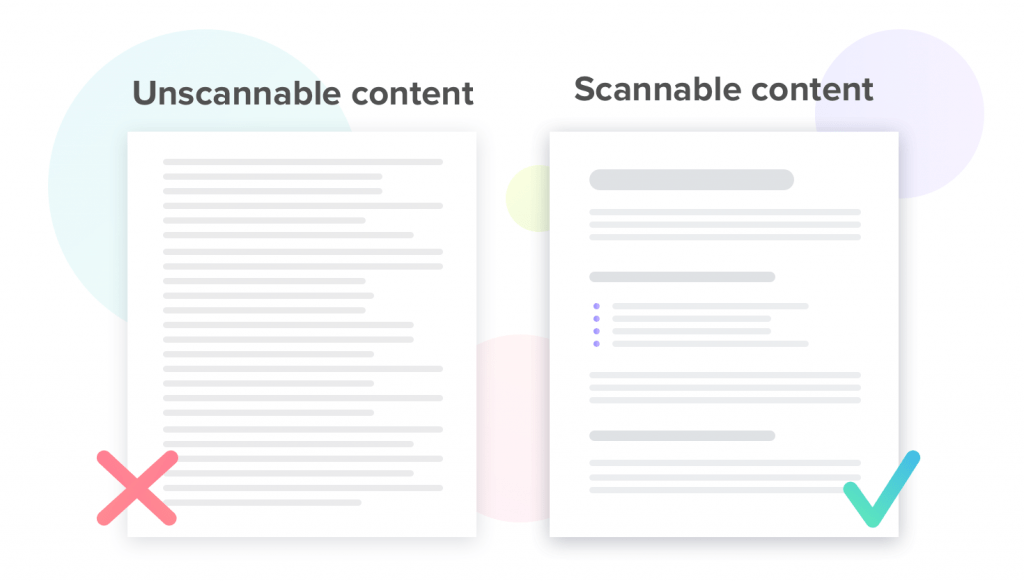
Source: SE Ranking
Scannability makes a copy easier to read. It gives hasty readers the needed breath to quickly rush through your copy.
A scannable copy guides readers’ eyes to the most important aspect of itself.
Here are three tips to make your copy scannable.
Tips For Better Reader’s Experience
- Use sub-headers to break things up.
- Use bullet lists whenever possible.
- Use images and whitespaces as in this guide.
1. Use Subheadings to Break Things Up
First, don’t confuse subheadings with sub-headlines.
A sub-headline is the line of text that follows the main head. It’s also called the sub-title.
A sub-header or subheading is any bold-faced text on top of a paragraph within the body copy. It’s also called paragraph headers.
Clustered and text-heavy pages put your prospects off on sight.
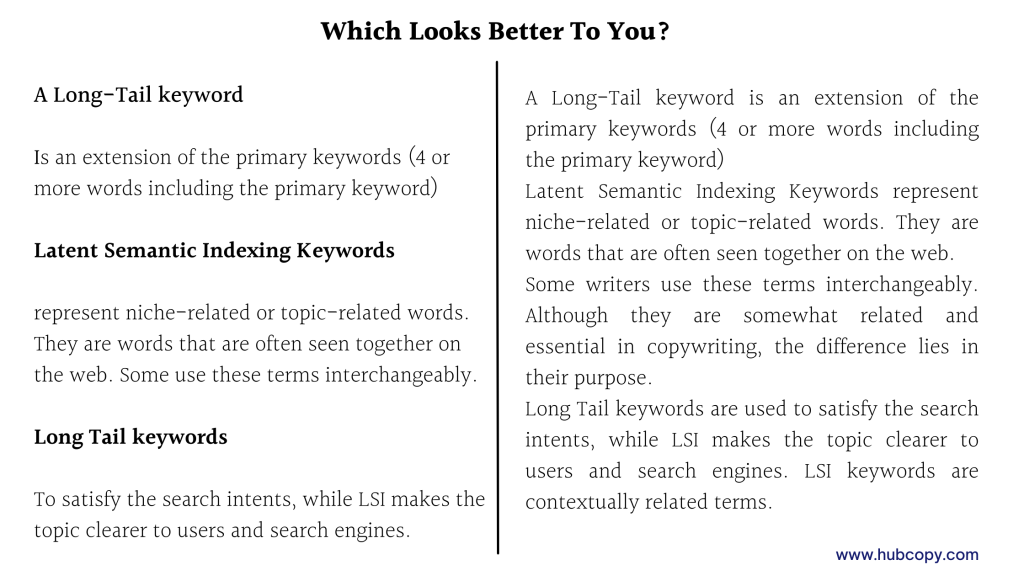
Subheadings break your copy into small, digestible bits. This makes it less intimidating to your readers.
With subheads, users pick the important point in a block of content quickly.
As they try to scan through your web page, your subheadings guide their eyes.
Making it easy for people to read your copy helps you retain their attention, which gives you a better chance of converting them.
2. Use Bullet Lists
Bullet lists are like mini-headlines. You can use them to break any chunks of text into informative lists.
They improve the structure of your content and appeal to readers’ brevity cravings.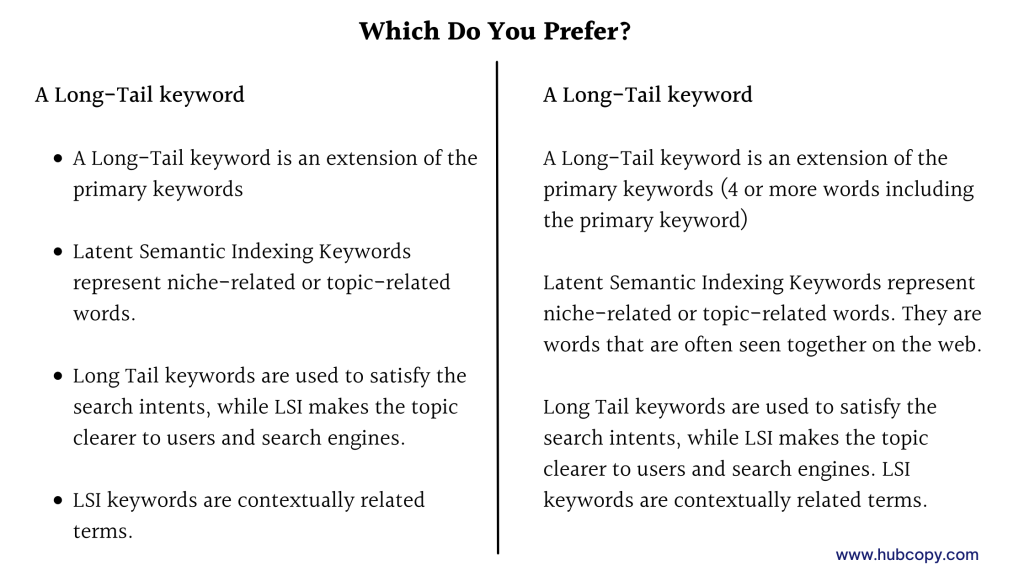
Bullet lists make visitors stay longer on a page, and using them often can be instrumental to conversion.
For these reasons:
- They are easy to read. And due to the simple structure, readers are likely to read them all.
- They are less strenuous on the eyes than lengthy paragraphs.
- They help emphasize and organize information in logical order.
- They are used to highlight important points.
- They encourage scanning and make life easier for your readers.
- Lastly, they are easy to write.
Copywriting Technique #4: Use Short Sentences and Paragraphs
A few decades ago, long sentences and paragraphs signified intellect and quality writing. Today, they aren’t.
Then, a long sentence symbolizes disruptive creativity, one whose audience meets with praise.
You don’t need to travel far to come across these amazingly disgusting bulky lines. Literature has them aplenty.
Orhan Pamuk, a 2016 Nobel Prize in Literature awardee, has a 127-word sentence in his book- My Name Is Red:
“We were two men in love with the same woman; he was in front of me and completely unaware of my presence as we walked through the turning and twisting streets of Istanbul, climbing and descending, we traveled like brethren through deserted streets given over to battling packs of stray dogs, passed burnt ruins where jinns loitered, mosque courtyards where angels reclined on domes to sleep, beside cypress trees murmuring to the souls of the dead, beyond the edges of snow-covered cemeteries crowded with ghosts, just out of sight of brigands strangling their victims, passed endless shops, stables, dervish houses, candle works, leather works and stone walls; and as we made ground, I felt I wasn’t following him at all, but rather, that I was imitating him.”
Henry James is a great British author. He wrote a 1650-word long sentence in The Golden Bowl.
As if those were not enough, in The Last Voyage of The Ghost Ship, Gabriel Garcia Marquez wrote an article-length 2156-word sentence.
Readers can forgive long sentences in speeches and maybe in contemporary literature. But in writing, they are one of the brightest red flags.
The narrative for the 21st century is- Don’t try it.
It’s this straight…
Only a copy that gets read has a chance to convert. People on computers want to get through whatever content as fast as possible.
When you overload their short attention span with long, thought-jumbled sentences, they’ll leave.
Short sentences and paragraphs help with the 2 dearest things to your readers;
- Speeding up their reading and,
- Processing information in the shortest possible time.
Factoring those into your writing will culminate in a better reading experience. And ultimately make your copy an interesting read for them.
We can sum up the problem of long sentences into four points;
The Problem with Long Sentences in Your Copy
- They are difficult to understand
- They are vulnerable to grammatical mishaps.
- There is a high chance of losing the readers along the way.
- They give a bad first impression
If your prospects have to go over your sentence a second or third time before making sense of it, you’ll lose them.
The Problem with Lengthy Paragraphs in Copywriting
Appearance can make or break a copy.
When you make it look like a novel page, you’ve given your audience a real reason not to read.
Lengthy paragraphs are more than strenuous on the eyes. They are also difficult to scan.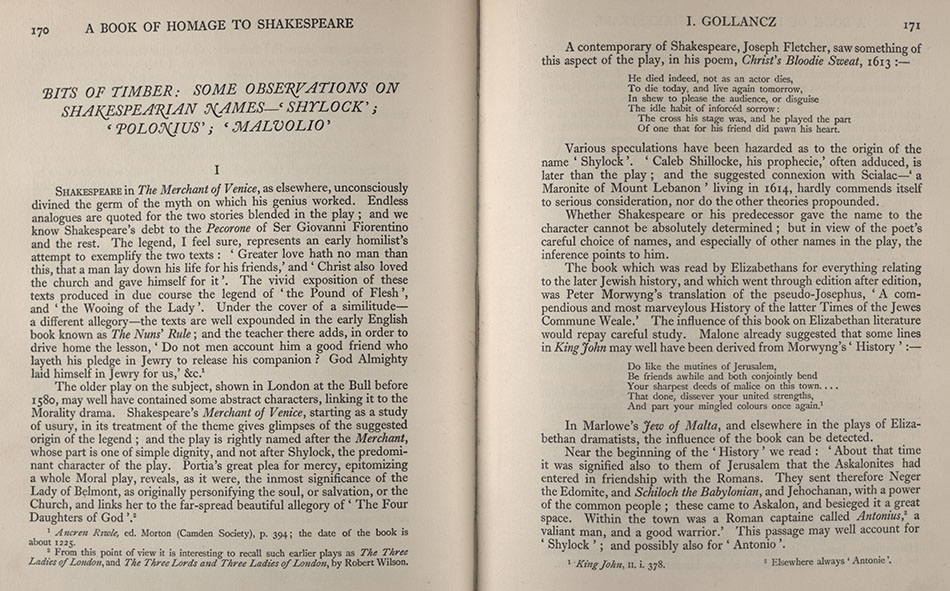
Why not make it comforting and inviting by using short paragraphs? Here’s the way.
Your paragraph should contain one main sentence expressing a central thought. Others should be there to complement it.
Below are some web writing practices. Use them to make your sentences and paragraphs better.
Best Practices for Sentences and Paragraphs in Copywriting
To keep readability front and center in your writing, here are 4 rules of thumb:
- Short and familiar instead of long and complex words
- One sentence, one thought
- 15-20 words max per sentence
- 2-3 sentences per paragraph
1. Short and familiar instead of long and complex words
Examples;
- “Near” instead of “Proximity”
- “Reward” is friendlier than “Remuneration”
- “Start” is better than “Commence”
- Use “Helpful” in place of “Advantageous”
- “Replace” Subsequently with “After”
- “Fix” is chatty, “Repair” is bookish.
2. One sentence, One Thought
When you muddle multiple or contrasting thoughts into a paragraph, you open the door to ambiguity.
A sentence should express a single idea and nothing more.
Lumping 2-3 sentences into one with a semicolon or conjunction may sound smart.
But it’s not because your reader’s brain will do extra work to process it.
And the longer it takes them, the slimmer the chance they will continue reading.
3. 15-20 words max per sentence
Short sentences are straightforward and highly comprehensible.
Plus, they pose a minimal threat of grammatical inaccuracy.
Although there are no rigid rules about the length of a sentence. Copywriting demands that you use short ones often to give your readers needed pauses.
Like any other writing practice, too many short sentences also have drawbacks. They make your copy monotonous, puncturing the flow and liveliness of your writing.
Use sentences of varying lengths to create a conversational spark between your copy and its prospects.
Follow a short sentence with a fairly long one. Add another short sentence. Then, go for a longer one, all without exceeding a reasonable word count. We recommend 20.
4. Write 2-3 sentences per paragraph:
Overly long paragraphs wear your readers out.
They give the impression that you are battling to organize your thoughts.
You’ve seen what a paragraph does above. The paragraphs in your body copy should have 2-3 sentences max.
Anything Longer? The risk is all yours.
Copywriting Technique #5: MakeYour Value Proposition Obviuos
Many a time, we see copy whose value propositions are difficult to put together.
At others, we find value propositions buried within the bulk of texts on “About us” pages.
A value proposition lives best at the forefront of your website.
But what’s a value proposition, and why is it important?
What is a Value Proposition?
A value proposition is a marketing statement that explains why a prospect should use a service or buy a product. It’s the principal motivator for buyers’ actions.
A value proposition makes a bold business promise to customers. So. it isn’t just any string of text you can slap somewhere in your copy.
Value propositions live above the fold in any form of copy, website, landing page, sales page, etc.
How Do You Write A Unique Value Proposition?
When you write a value proposition, you must add granularity to your message.
It’s called a proposition because it elicits why you are better than your competitors. So, don’t go for vague slogans. Make it evident.
The following are what make a good value proposition.
- It makes a promise
- It solves a problem
- It’s persuasive
- It’s unique to your brand
A value proposition can be a one-liner, a small paragraph, or a bullet list.
For a better understanding of value proposition and unique selling proposition, as well as the differences and similarities between the two marketing terms, check out these guides:
- Unique Selling Proposition: The Fundamentals
- How to Create a Unique Selling Proposition with 5 Great Examples
- 36 Unique Value Proposition Formulas with Real-Life Examples
Copywriting Technique #6: Make Your Copy Conversational
Don’t make your copy bookish.
Copywriting is communication first, then selling. Think about the type of communication people enjoy- Friendly chats.
It’s as simple as Shirley Polykoff put it.
Copy is a direct conversation with the consumer.
Shirley Polykoff
So, treat your copy like a face-to-face interaction with a best friend. Let your readers feel your copy is exclusively for them.
Use personal pronouns like you, your, I, and me to make your writing more direct and conversational.
But beware of self-overindulgence. Do not overuse pronouns in the first person, like I, me, we, etc.
Center your copy on “YOU” (your prospect) and “YOUR” (their problems).
You’ve heard this before. There’s no crime telling you again.
Nobody cares about your products or services. They only care about their problem and getting it solved. It’s only when your copy addresses both that they care.
HubCopy
Copywriting Technique #7: Get CTAs (Call-to-Actions) Right
After the header, it’s safe to say Call-to-Action is the most important element of an effective copy.
Because, everything-done-right but CTA could be all effort in futility.
The copywriting techniques you’ve learned so far will help you create a mood in your audience. A ready-to-buy one, for that matter.
But should your audience wander when they are ready to take action, that mood will die.
With no button to click handy, the urge will subside.
In the end, they’ll get frustrated and abandon your page.
You don’t want that to happen. That’s why you need to know how to insert CTAs.
You must be able to guide readers to conversion without being pushy.
How to Insert CTAs in Your Copy?
“Buy Now,” “Click Here,” “Get Started,” etc, after every paragraph is not the way.
You don’t need to rack your brain on where to put CTAs in your copy. The best location is where your audience will look for one.
The top (hero section), middle, and bottom of a copy are the most likely destinations a prospect will look at for a CTA.
And, there’s no hard rule about CTA frequency of occurrence. Just make it reasonable according to the length to the length of your copy.
Judicious use of CTAs can also amount to a great user experience. The easier you make it for your users to respond, the more effective your copy is.
One last piece of advice – Stay away from generic CTAs.
Instead,
Use Strong CTAs
Generic CTAs are all too common. Your prospects see them time and time again.
They undermine a copy’s credibility and make users reluctant to take action.
If you’ve done a great job in your copy, there’s nothing bad in dishing out some commands.
So, show your prospects you are on top of the game and confident about what you sell.
A strong CTA tells your prospect exactly what to do. It can also include what to expect.
See what we are talking about.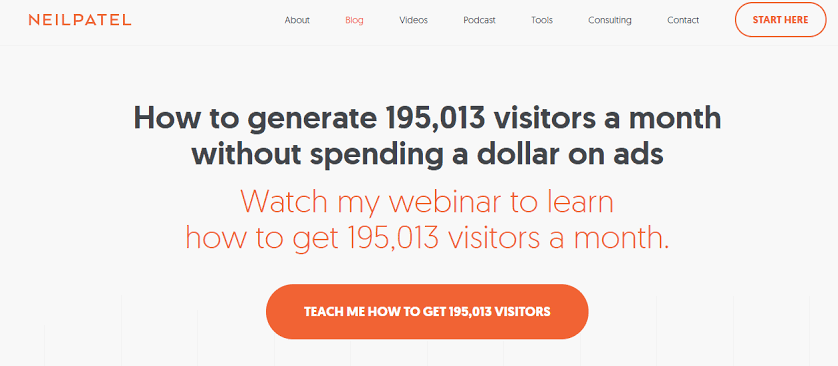
You Are Copywriting Ready. Break A Leg!
Copy that cuts through the noise can take your business to the next level.
Whether you’re a marketer or an entrepreneur, go forth and apply these copywriting techniques and strategies. They’ll help you navigate the complex dynamics of modern consumer behavior.
But remember, these techniques are nothing but duds without proper copywriting research.
You must know your audience and their pains. The market and the competition shouldn’t be your mystery.
Plus, keyword research, search terms, and search intents must be unambiguous to you. If you need help, this SEO copywriting guide covers them in detail.


